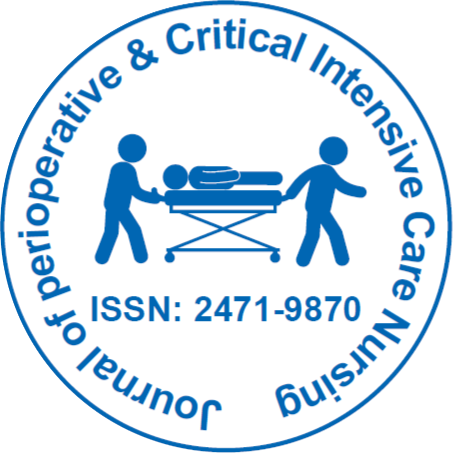
Journal of Perioperative & Critical Intensive Care Nursing
Open Access
ISSN: 2471-9870

ISSN: 2471-9870
Short Communication - (2021)Volume 7, Issue 2
The physical workload associated with patient handling is one of many dimensions of workload faced by nurses employed in ICUs, as defined in this article. The effects of workload on various outcomes are addressed, including nurse health, safety, and quality of work life, as well as the safety of care delivered by ICU nurses. A systematic approach to workload assessment is suggested, with the goal of defining the work system variables that lead to the various aspects of workload as well as the interdependencies among the various workload dimensions.
Nurses play a crucial role in the healthcare industry, delivering patient care and serving in leadership positions at hospitals, health systems, and other organisations. Being a nurse, on the other hand, comes with a lot of difficulties. Although nursing has a broad reach, its popularity is dwindling because nurses do not receive adequate financial compensation or recognition for their duties, which are much more demanding than those of doctors and physicians. They deal with patients on a daily basis and work unfathomably long hours, but they are still underpaid. Nurses should be paid more and be treated with more respect as a result of their duties. Another problem that nurses must contend with is the hospital's aggressive conduct. Many patients are difficult to interact with and, at times, aggressive. As a result, this career can be very demanding and frustrating at times. Nurses should work to strengthen their interactions with physicians and colleagues, work demands, organisational practises, and recognition of competence in order to reduce the difficulties they face in hospitals [1].
Nursing practises are critical in providing quality healthcare, especially in intensive care units (ICU). However, such operations vary depending on a number of factors such as the operating environment, the nature of the illness, the workload, staff training and expertise, and cost-effectiveness, as well as the diseased patients' clinical outcomes. ICU nurses face a variety of daunting obstacles as a result of the intense attention that ICU patient care necessitates. Nurses who wish to work effectively in the ICU must learn how to cope with these difficulties, and acquiring that comfort takes countless hours of firsthand experience. The challenges that ICU nurses face are numerous, but most people who join the profession have a higher-than-average mental and physical endurance and they find ways to adapt. Burnout and compassion exhaustion are temporary symptoms that can be handled and avoided by focusing on the skills that make an ICU nurse effective [2].
According to past studies, the nurse-to-patient ratio has been used to assess patient safety in relation to nursing workload. Previous research has shown, however, that the nursing workload is a more dynamic relationship that cannot be predicted by a straightforward ratio such as the nurse-to-patient ratio. This nurse-to-patient ratio is taken into consideration because it is readily available and simple to use, and it will most likely be used as a baseline for measuring all aspects of ICU treatment. Evidence suggests that patients in the ICU may experience a variety of negative outcomes as a result of poor nursing care, including increased mortality, longer hospital stays, and the acquisition of in-hospital infections. To avoid such negative outcomes, more research should be geared toward the proper allocation of nursing skills based on available healthcare resources [3].
REFERENCES
1. Mahran GS, Taher AA, Saleh NM. Challenges and work crisis facing critical care nurses. Egypt Nurs J. 2017; 14(3):235.
2. https://www.americanmobile.com/nursezone/career-development/ challenges-in-critical-care-nursing-and-how-to-overcome-them/
3. Muacevic A, Adler J, Almenyan A, Albuduh A, Al-Abbas F. Effect of nursing workload in intensive care Units. Cureus. 2021;13(1).
Citation: Saleh AA (2021). An Overview on Critical Care Nurses: Challenges & Workload. J Perioper Crit Intensive Care Nurs 7: 168. doi:10.35248/2471-9870.21.7.168
Received: 05-Feb-2021 Accepted: 19-Feb-2021 Published: 26-Feb-2021 , DOI: 10.35248/2471-9870.21.7.168
Copyright: © 2021 Saleh AA. This is an open-access article distributed under the terms of the Creative Commons Attribution License, which permits unrestricted use, distribution, and reproduction in any medium, provided the original author and source are credited.